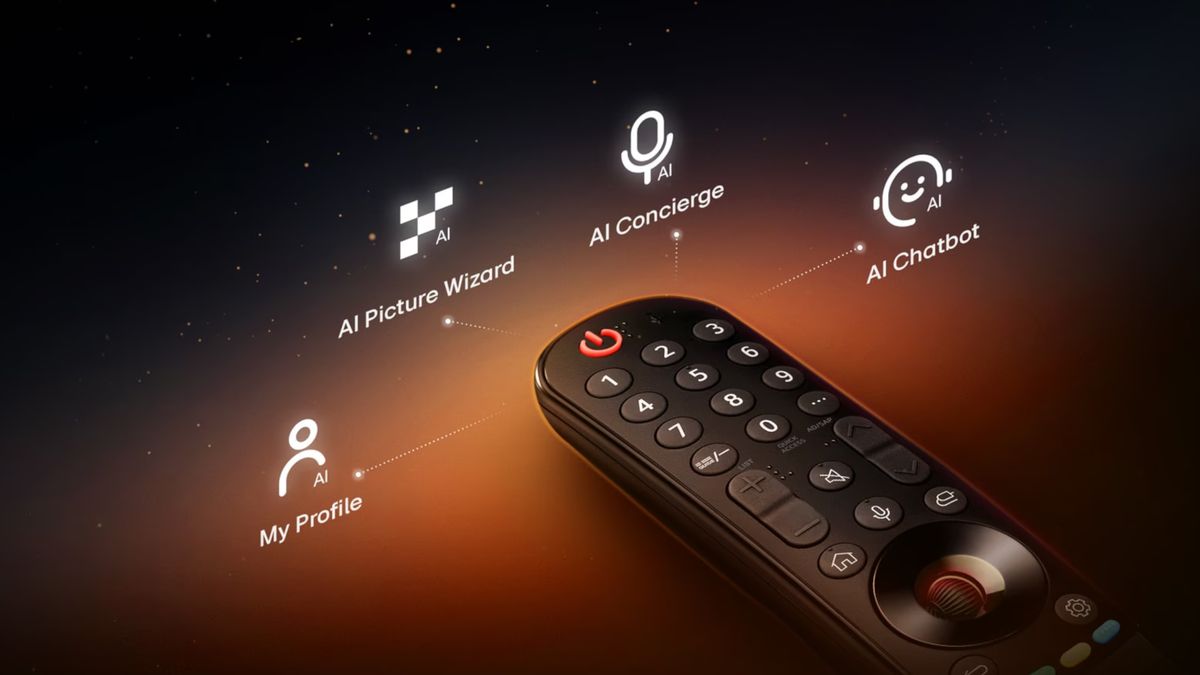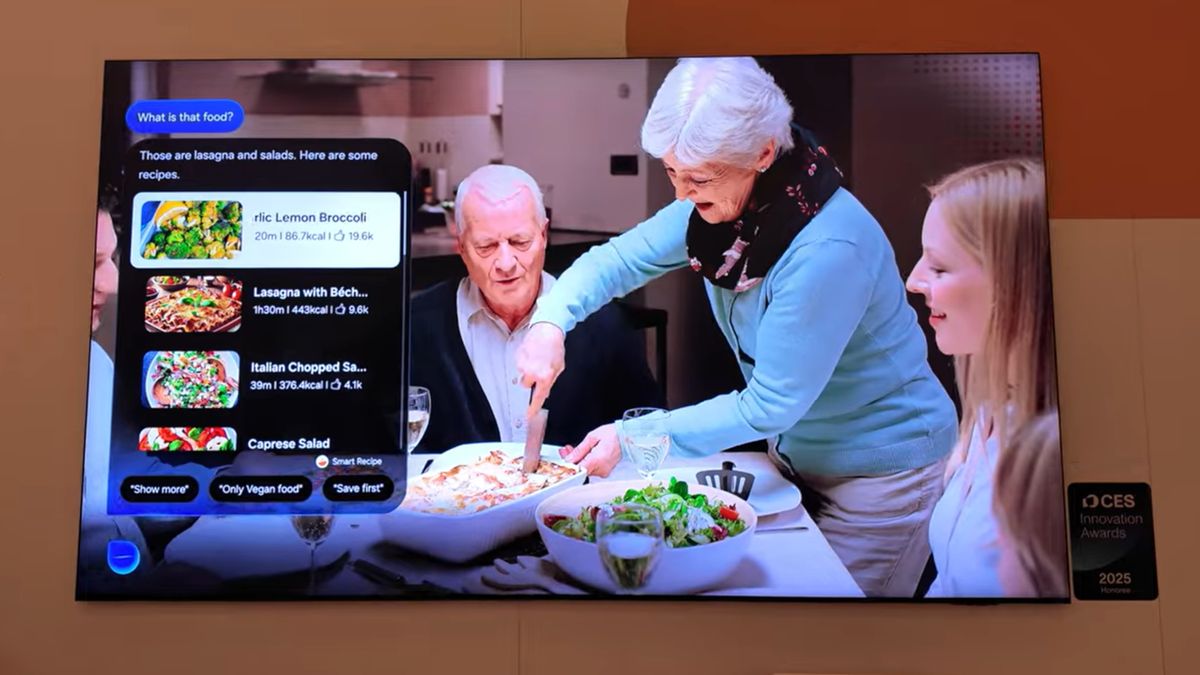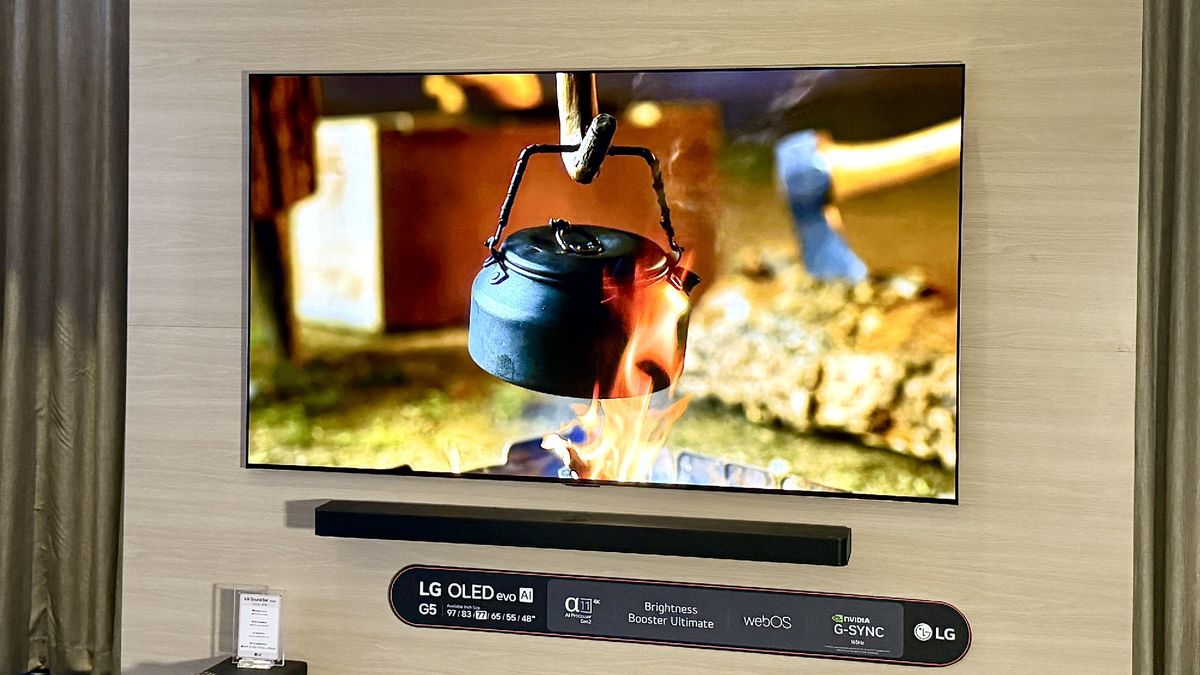AI was inescapable at CES 2025. It seemed like every brand in attendance — from crowd-funded start-ups to the biggest companies in the world – were desperate to demonstrate how AI-based features are on the verge of transforming how we use dishwashers, grills and litter boxes.
Unsurprisingly, TVs were right in the mix. Samsung, LG and Hisense were just a handful of the TV brands I visited whose booths were decked out with AI-related demos. But as excited as everyone I talked to seemed to be about the advent of AI in TVs (including many of my colleagues), I remain unimpressed.
In fact, having spent over a decade covering this beat, last week’s AI blitz at CES left me feeling more exhausted and cynical about the TV business than I’ve been in a long while.
Can AI make your TV better?
(Image credit: Nvidia)
I do believe it’s possible for AI to make a TV better. Its successfulness is content-dependent and requires some restraint in its implementation, but the benefits are there.
I’ve seen AI-driven processing do an impressive job upscaling 4K content to 8K, for instance. And, at CES this year, I watched Samsung demo a feature called AI Gamma on its S95F OLED, which automatically adjusts near-black shadow detail based on the lighting conditions of the room.
In some circumstances, a feature like that can be valuable to some. Most importantly, it’s up to the viewer whether they want AI Gamma enabled or not, so you’re not automatically funneled into an unwanted viewing experience.
I do believe it’s possible for AI to make a TV better.
And while improving upscaling and enhancing shadow detail both have to do with a TV’s picture, there’s room for AI to enhance other aspects of watching TV, too. Samsung is bringing the Galaxy S24’s AI-based Live Translate feature over to select TVs in 2025, to name one example. It’s the sort of AI functionality whose usefulness is easily understood: enable it and receive an on-screen, real-time language translation.
Broadly speaking, I have plenty of hesitations about AI: the energy consumption at the heart of many of its software applications, the ethical questions surrounding Large Language Models (LLMs) and their potential sourcing of data from protected works, and the ghoulish, off-putting aesthetic of AI-generated “artwork,” just to name a few.
But if a TV brand can demonstrate that an AI-based feature can improve the viewing experience in a very real way, I’m more likely to be on board. The applications outlined above are perfect examples of this. I’ve been reviewing TVs for over a decade, and throughout that time, brands have always sought to improve upscaling (as we see with AI upscaling) and to make TVs more accessible (as we might see with Samsung’s Live Translate feature).
Unfortunately, most of the AI-driven features I just took in at CES leaned away from this dignified approach, favoring a strategy that feels instead like a series of solutions in search of problems.
I don’t need most of these AI features on my TV

(Image credit: LG)
At a private showing at CES, LG walked me through many of the new AI features arriving on LG’s 2025 TV lineup. The brand is referring to this suite of enhancements as Affectionate Intelligence, because it aims to “[redefine] the conventional, technical understanding of AI by focusing on its potential to revolutionize the customer experience paradigm.”
I’m not entirely sure what that means, but I can say that I was left feeling cold about what was ostensibly supposed to make me feel like a person worthy of affection.
What started as a fuzzy marketing exercise (adding the term “AI” to previously established software enhancements) has now blossomed into a full-on frenzy.
With the help of Microsoft Copilot, LG’s AI Chatbot lets users ask questions about the problems they might be having with their TV. Or, as LG’s press release puts it, AI Chatbot “identifies potential user challenges and offers timely, effective solutions.” I can’t report how effective it is until I have an opportunity to use it, but I can report that talking to customer service chatbots has never been high on my list of easy and convenient troubleshooting strategies.
LG’s AI personalization enhancements are said to learn from the viewing preferences of any given person, highlighting recommended content by way of the webOS home screen. This just sounds like more ads; visual clutter standing between me and whatever app or input I’m trying to access.
Access to LG’s Generative Image Gallery means that users can now create custom image backgrounds on webOS. Weird, AI-generated slop? That’s not affectionate — that’s just something I don’t want to look at.

(Image credit: Tom’s Guide)
Samsung Food is heading to TVs, and according to Samsung, this integration “recognizes the food on your screen and provides recipes for bringing it to life.”
But what does that mean? Is the AI going to provide a list of its own recipes based on whatever dataset it’s trained on? AI recipe development is not something I particularly trust, and part of the fun of referencing a recipe is walking someone else’s path. It’s a way I relate to those around me. It’s real affection.
Alternatively, if Samsung Food is simply identifying a lasagna on the screen and saying, essentially, “here are six lasagna recipes I found on the web,” I’m not sure I need that. I suppose if I didn’t know that I was looking at a traditional food dish called “lasagna” I might need some help figuring out what I was looking at, but let’s be honest: How often has that ever happened to you? Is this solving a problem, or is it simply another AI-related item for the Samsung portfolio — one that sounds just futuristic enough to grab your attention.

(Image credit: Future)
I harp on this because, in spite of a flurry of questionable AI features at CES 2025, there were some exciting, down-to-earth developments in the TV space this year.
At the same session in which I was introduced to the new iteration of AI Chatbot, LG quietly revealed that its flagship TV, the LG G5 OLED, is leveraging an all-new OLED panel that might be its brightest ever.
At the same event where Samsung showcased its lasagna-identifying technology, I got to marvel at what might be its flagship model by this time next year: an 8K TV that makes use of new panel technology, (what Samsung is calling RGB Micro-LED).
What started as a fuzzy marketing exercise (adding the term “AI” to previously established software enhancements) has now blossomed into a full-on frenzy. TV brands are telling you that your life at home either does revolve around your TV’s smart platform, or that it ought to. Mine doesn’t, nor should it.
Perhaps you watch TV differently than I do. Maybe you want to see what your TV comes up with if you speak into your remote control and ask it to take a run at analyzing Frasier Crane’s quiche. But I don’t trust AI to tell me how to cook, and if I wanted a dependable quiche recipe, I know how to find one.


